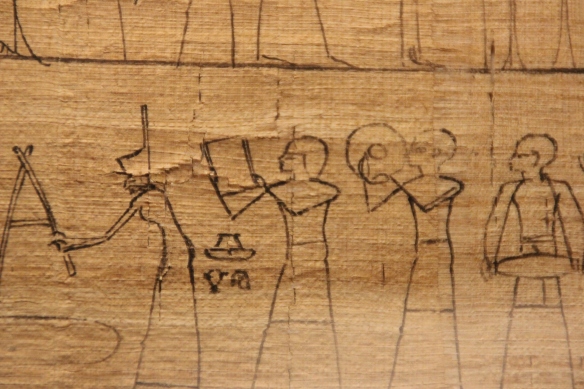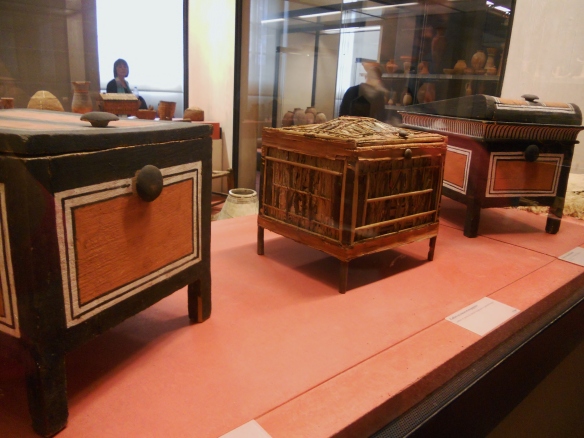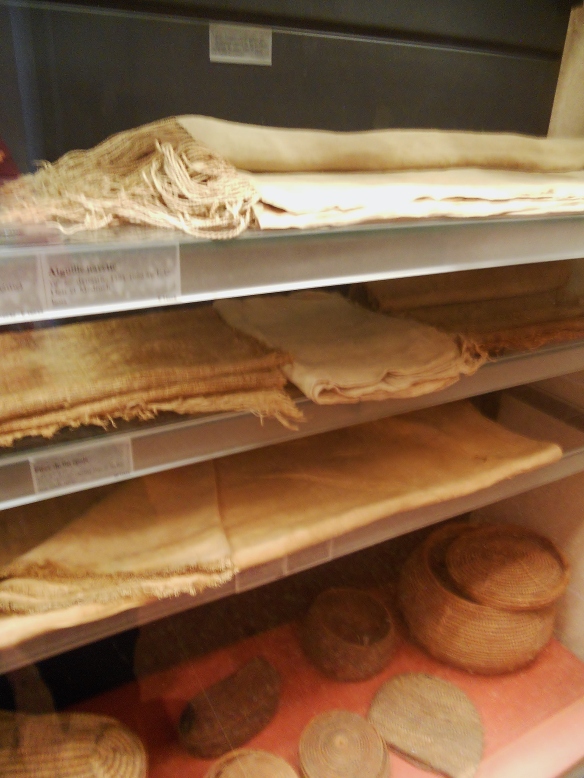What Egyptians Ate
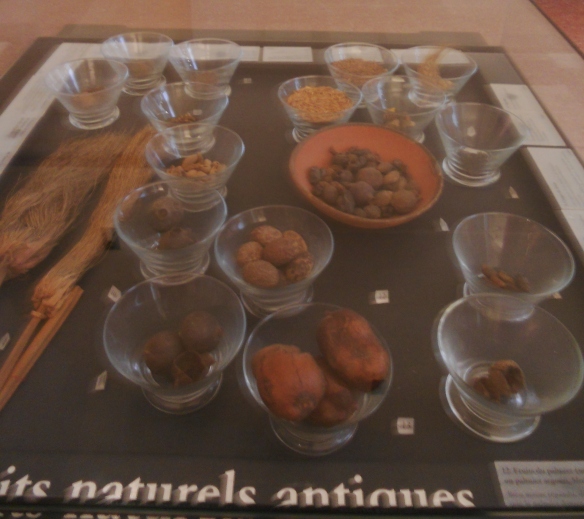 This display shows some of the typical fruits, grains and seeds the Egyptians cultivated and used daily. There are quite a few nuts, barley and flax.
This display shows some of the typical fruits, grains and seeds the Egyptians cultivated and used daily. There are quite a few nuts, barley and flax.
Tepemankh’s Banquet Menu

I saw this fascinating bas-releif describing the menu for an actual banquet held by the noble man, Tepemankh. It was such a memorable feast that it was engraved onto the wall of his tomb Unfortunately a lot of the names are local delicacies, pastries and cakes that have no modern equivalent. So we will never know half of the wonderful foods on this elaborate menu.

Producing the Food
 Beer was an essential staple in the Egyptian diet. Some scientists speculate that drinking beer daily might have helped prevent disease in the ancient land. The beer making process requires all water to be boiled. Making it safer for general consumption that regular pond or well water. Here we have a clay sculpture of the beer making process.
Beer was an essential staple in the Egyptian diet. Some scientists speculate that drinking beer daily might have helped prevent disease in the ancient land. The beer making process requires all water to be boiled. Making it safer for general consumption that regular pond or well water. Here we have a clay sculpture of the beer making process.

Bread was another major staple in most of the ancient Mediterranean world. And still is, to this day. On the left here we have a bas relief depicting two men making bread. One is preparing the dough in a big mixing bowl and the other is watching the bread baking in molds, ready to remove it from the ovens.
Agriculture

Here we can see the kinds of tools ancient Egyptians used to plow their fields.

We can see a clay and wood model of the techniques they used. This also shows that the Egyptians had domesticated animals as well.

Here is another example of the domestication of animals. On this painted wall fragment we can see a heard of Ibex like goats, and their herders, probably leading them to the slaughter actually.

On this bas-releif we can see a succession of workers carrying the the fruits of the harvest, palms and fruits, as well as some fowl, geese or ducks of some kind.

Here is a bas-releif of a group of women harvesting either reeds, the main component of papyrus or cotton to later be woven into linen. Not all Egyptian crops were food based.

On this fragment of painted wall we can see how the men harvested wheat. Also on the bottom register, they are replanting and plowing the field once more. I’m not entirely sure just what is happening in the top register. There’s a cow, and men carrying some kind of reed cages. It’s a bit of a mystery.
Hunting

Hunting also contributed to the Egyptian menu. On the left we can see a wall painting with three registers, on the top a cow is being butchered, on bottom two we can see a cortege of Egyptians carrying all kinds of different foods, grains fish and fowl birds.
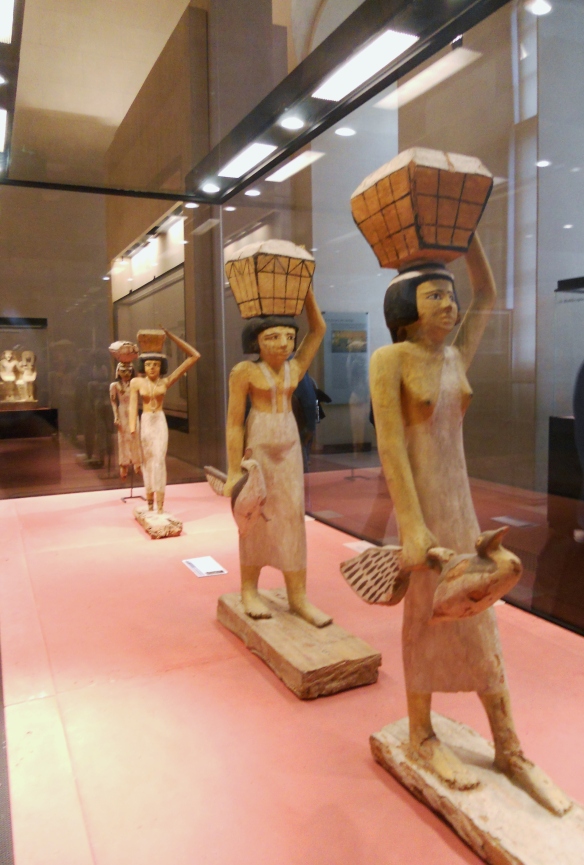
Just like the photo here, representing a ceremonial parade of women carrying food from the harvests and hunts to the temples. They are carrying fowl and grain.

We can see ancient quivers and arrows. It’s not visible on the photo but the metal quiver is engraved with a hunting scene of an Egyptian on a chariot letting arrows loose on some kind of gazelle or antelope. The wooden shafts of the arrows actually survived as well. I love how the Egyptians decorated their everyday items. They had a developed sense and love for the aesthetic.

Here are some daggers and axes. Some or the more elaborate ones were probably reserved for ceremonial uses but we can imagine very similar tools being used during hunting excursions.


